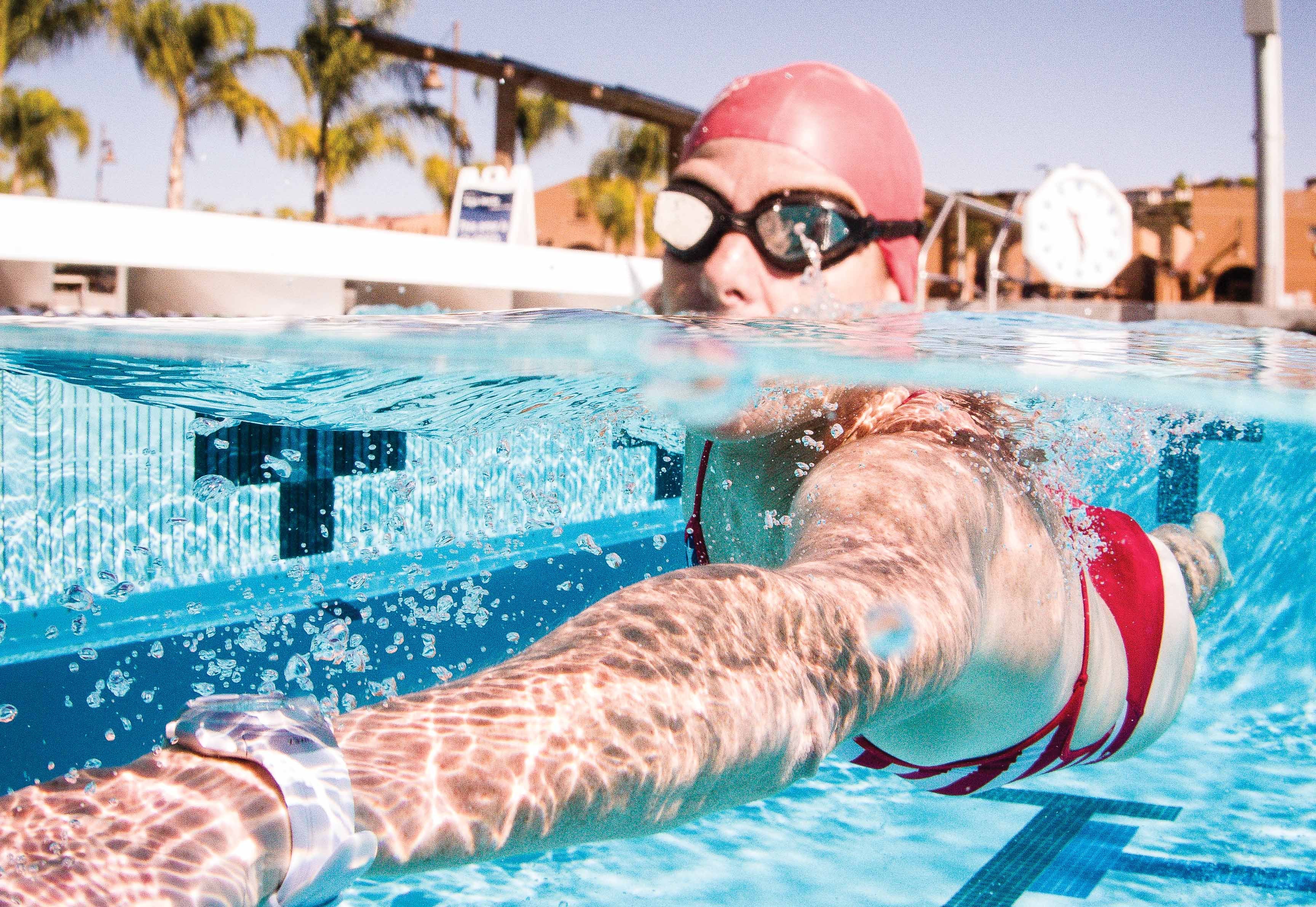Can A Data Watch Improve Your Swim?

Photo: John David Becker
The do’s and don’ts of swim training with a watch.
How can you tell the difference between swimmers and triathletes at the pool?
Look at their wrists. Recent technological advances have made it possible to track your swim data via GPS watch—which means a lot of gear-loving triathletes have started tracking yardage on their wrists. These mini computers can calculate almost everything during your daily activities and training sessions. But can using a data watch make you a better swimmer?
Popular reasons for using a data watch:
- Record laps
- Count strokes
- Keep track of intervals
- Calculate yardage
- Determine pace
- Calculate strokes per lap
- Provide a remote coach with your data
- Compare past performances
RELATED: Are You That Triathlete?
Although the reasons for using a data watch are compelling, success in the water is driven by technique and an indefinable “feel for the water.” An increase in speed comes from either a reduction in resistance or an increase in forward propulsion. Every swim practice should be as much about improving technique as it is about completing the total yardage or holding a specific pace.
If the watch is responsible for counting the yardage and computing pace, then it has provided an opportunity for improvement by allowing the user to focus on technique and improve their feel of the water. However, if that freedom is spent pushing buttons and looking at data screens, then the opportunity is lost. Don’t let the watch distract your attention from body position, stroke technique, breathing, kick and effort level. These are the fundamentals that create faster swimming, none of which are being measured on a watch.
It is not uncommon for an athlete and a coach to live and train on opposite sides of the country. In this scenario, the coach relies heavily on data from the athlete’s training sessions to generate future workouts. A data watch will provide the numbers that are important to track and report progress in the pool, especially during time trials or test sets where intervals and paces are created. For the lucky athletes that get to train under the watchful eye of a swim coach at practice, skip the watch and work on applying the stroke improvements provided from the deck.
Open water is primarily where I’m sold on the benefits of a data watch. It can record distance and other helpful data to be reviewed post-swim. A GPS-enabled watch can provide invaluable information regarding how straight you swam between buoys. Other benefits include providing intervals when there is no pace clock and calculating average pace over a long-distance swim.
Just like any other training tool, there are good and bad times to use it in training. Usage must be regulated so you utilize it enough to receive a benefit from the recorded data but not too much that it becomes a crutch or impedes smart training. Here are some examples of when to wear and when not to wear a data watch around water:
When to wear it:
During test sets or time trials
When you are swimming solo
In the open water
During your race
When NOT to wear it:
When a coach is on deck
For easy or recovery swim sessions
During a clinic or technique session